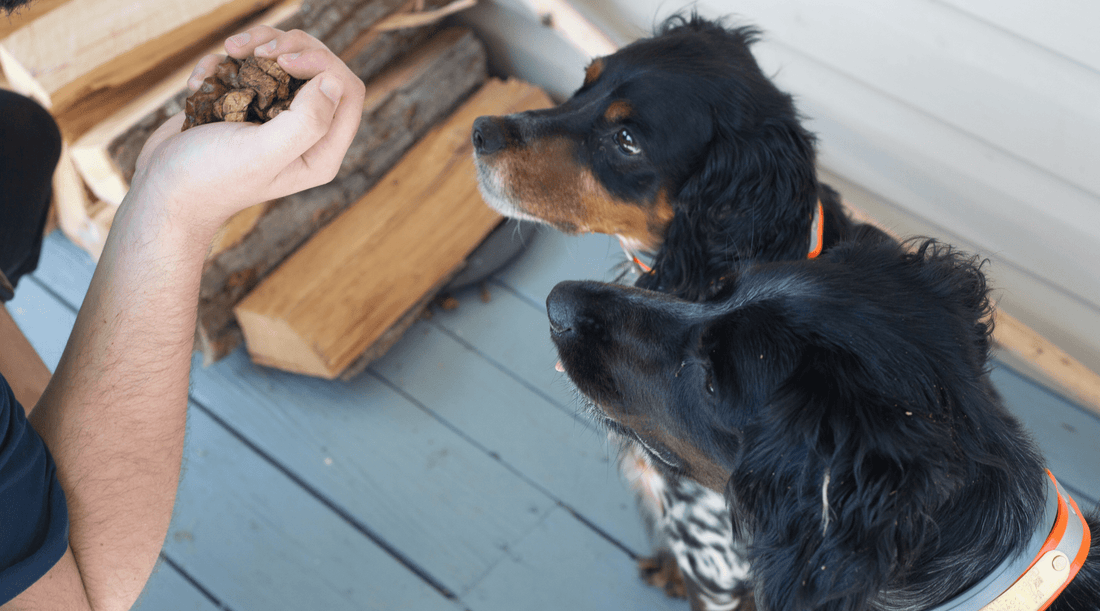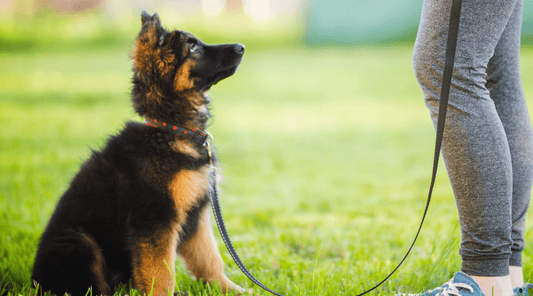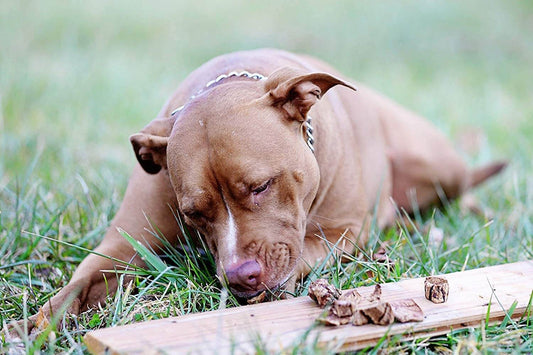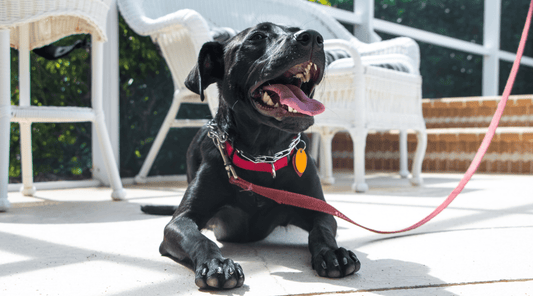
Impulse Control Training for Dogs: My Terrier Doesn’t Snatch Bagels Anymore
Dawn Miller Apr 05, 20254 Minute ReadLast Saturday, my neighbor Kelly brought over a plate of mini bagels with cream cheese for our little backyard dog-mom hangout. The second she set it down on the patio table, Pixie—my terrier—locked eyes like she’d spotted buried treasure.
And for a moment, I braced myself...
because Pixie used to be the dog who leapt up and snatched food like a cartoon bandit.
"Leave it" rested on the tip of my tongue. But it stayed there.
Pixie waited. Calm. Still. A good 30 seconds before inching forward. I redirected her attention to "sit" and then gave her a treat. Then she ran off into the grass one happy pup.
I've heard from many of my neighbors that their dogs can get jumpy, barky, grabby, or just can’t wait to get what they want. If this sounds like your K9, this is for you.
What Is Impulse Control Training for Dogs?
Impulse control is your dog’s ability to wait, pause, and stay calm—even when they really want something. Like human children, waiting is a learned behavior. It's part of puppy socialization—for a dog, not a child.
And a dog that didn't learn it early can still gain these skill points as an adult.
Any dog, no matter how hyper or unpredictable can learn to:
- Sit politely before meals
- Stay at the door instead of dashing out
- Walk past other dogs without going full drama mode
- Greet people without knocking them over
- Wait for you to finish pouring the kibble before diving in
- Refrain from jumping on kitchen chairs or the dining room table
Dogs can even learn not to get on the sofa unless invited for cuddles. That one can be very useful...and no, I don't use it. The more dogs on the couch, the merrier, as far as I'm concerned.
Basically, teaching a dog to manage their impulses is the difference between chaos and calm in a home. It's critical in multi-dog homes like mine.
And let’s be honest—we all need a little impulse control sometimes. (Looking at me, late-night cookie cravings.)
Signs Your Dog Might Need Impulse Training
If your dog:
- Jumps on guests
- Pulls on the leash
- Snatches food or toys
- Barks for attention
- Can’t hold a “stay” to save their life
- Spins like a top when excited
…it’s time to work on building patience. And good news—it’s not as hard as it sounds.
Why Positive Reinforcement Works Best
"No", "Stop", "Ahhhh". This language doesn't work well with a dog. They struggle to understand what they're doing wrong...and more importantly what to do instead.
Here’s the deal: dogs repeat what works. If being calm earns them a dog treat or praise, they’ll learn to keep their paws and enthusiasm in check. If jumping on the picnic table to filch a bagel is the only way they get rewarded, that's what they do.
And interesting enough, something a person yelling or laughing at bad behavior is the reward.
You don’t need harsh corrections when you learn how to reward what you want and stop rewarding what you don't.
You just need:
- Timing
- Repetition
- And the right rewards
I use high-value, single-ingredient treats like beef lung bites—because they’re healthy, they don’t upset sensitive tummies, and my dogs go wild for them.
(Plus, they don’t smell like old gym socks. So that’s a win.)
How to Train a Dog to Stay
Several commands teach impulse control. In different contexts, down, gentle, heel, and leave it commands are super useful.
But teaching “stay” is one of the first and best impulse control exercises. It applies to almost anything.
Step 1: Start Small
- Ask your dog to sit (if you haven't taught your dog to sit yet...Rewind. Teach sit. Then come back.)
- Hold your hand up like a stop sign and say, “stay”
- Count to one, then reward with a treat.
- Release them with a cue like “okay!”
Pro Tip: This only works with high value treats. These are all-natural treats that dogs can smell and anticipate. The promise of a tasty reward drives them to learn commands quickly. Fast learners get more rewards.
Step 2: Build Duration
- Gradually add seconds before rewarding
- Stay calm and patient—your dog feeds off your energy
Step 3: Add Distance
- Say "stay". Then...
- Take several steps back, then return and reward
- Turn your back on them, then walk back and reward if they stayed.
- If they get up too soon, just reset—no scolding needed
How to Stop a Dog from Jumping on People
This is a big one in our neighborhood, especially during the many cookouts we host as a community.
Whatever the event, more guests mean more legs to jump on. And some guests don't have dogs, so they don't know how to respond.
Here’s what worked for us:
- Ask guests to ignore your dog unless all four paws are on the ground
- Reward calm greetings with a treat or attention
- Use a leash during early practice sessions
- Teach an alternative behavior like “sit” as a replacement for jumping
And remember: Jumping is usually about excitement. So staying calm and consistent helps your dog stay calm too.
Dog Behavior Modification Through Routine
Dogs thrive on structure. If you build impulse control into your day-to-day, it becomes second nature. Use everyday activities to teach impulse control.
- Have your dog "sit" before you open the back door to let them out.
- Ask your dog to "stay" a few feet away while you pour kibble.
- Teach your dog "let's go" and "wait" to improve communication and cooperation on walks.
- Pause before tossing a ball.
- Use "sit" and then "load up" when entering a vehicle.
Every little moment becomes a training opportunity. And every win builds a calmer, more focused dog. Your dog learns to follow your lead. Experts believe dogs can learn around 120 verbal commands.
This isn't about control. It's about cooperation. A dog with impulse control is happier and more confident because they understand how being part of your family works. Follow command = reward.
That reward doesn't have to be a tasty treat every time. Praise, toys, and belly rubs are also rewards.
Use Bones and Treats to Reinforce Calm Behavior
After a good training session, I love giving my dogs a long-lasting dog bone to wind down.
Here’s why it helps:
- Dog bones reinforce calm behavior
- Chewing a marrow-filled dog bone releases feel-good endorphins that calm and promote well-being.
- Dogs learn to "do their own thing" sometimes instead of staying underfoot.
- It keeps them occupied (aka out of trouble).
- It stops destructive chewing. More fun to chew on a marrow bone than old, smelly sneakers.
- Marrow bones contain collagen and nutrients that support overall dog health.
- Chewing on dog bones also promotes dental health and joint health.
Suffice it to say that chewing a dog bone is like yoga for dogs, promoting health inside and out.
Dog Training with Dog Treats: Positively the Best Way to Teach Impulse Control
Curious about the new skills your dog can learn? We've set up the 7-Day Dog Training Challenge for dog parents just like you. With easy-to-follow videos and advice from real trainers, you won't want to miss this event.
Available On:


Disclosure: This article may contain affiliate links, which means we may earn a small commission if you make a purchase through these links—at no extra cost to you. We only recommend products we trust and believe will benefit you and your K9.



